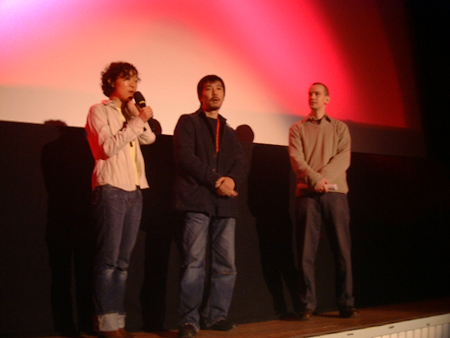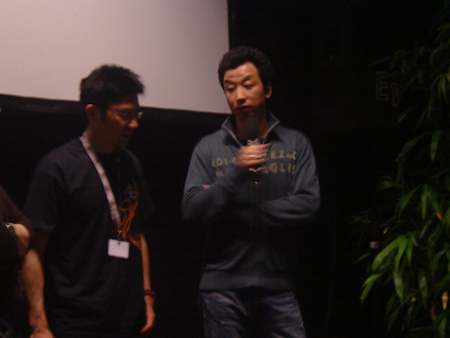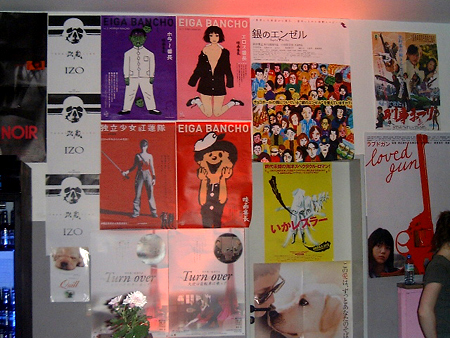NIPPON CONNECTION 2005
HAPPENINGText: Yurie Hatano
Japanese films, the main part of the Nippon Connection, are divided into three sections every year.
First, there is a section called “Nippon Cinema” which was placed in the biggest theater at the festival center. Most of the films were already open to the public in Japan, and the length was on average approximately 100 minutes. “Blood and Bones”, “Crying Out Love, in the Center of the World”, “Install”, “Kamikaze Girls”, and many other films were presented with English subtitles. “Little Wing” by Yoshitaka Kamada who gave a speech on the stage is intended to run in some provincial theaters in Japan in the near future.
The second section called “Nippon Digital” had very diverse films of various genres and lengths; one from the underground, one already released to the world, a documentary, an animation and many more. “Planet Studio +1” project from Osaka, Japan showed more than 20 films including animation short films. “Aka wo miru”, which was a black and white story by director Makoto Asakawa received the best reception.
Moreover, a new comedy collection of short stories using manequines “The Fuccons” by Yoshimasa Ishibashi, a director of Kyupi-kyupi a group that provides various genres of films, music, dance, and graphics. At the discussion period after the screening, lots of people showed an interest in the pieces. “I’m thinking of a new way of sending films and videos using a cellular phone and the Internet,” he said. This experimental film has all 130 episodes and will be released in USA soon. “It’s easy to change the language of this film, so I hope people all over the world will be able to watch in their own language at the same time.” He started going into Korea, Italy, and Canada, and also having exhibitions and live performances with a theme around the leading character Mikey.
The third section called “Nippon Retro” had 10 films all by director Seijun Suzuki, “Branded to Kill”, “Carmen from Kawachi”, “Pistol Opera”, and so on. This is the 3rd time this section has occurred, where they introduce important to the history of Japanese film making. The earliest film was “Harbour Toast: Victory is in Our Grasp!” in 1956, and “Heat-Haze Theatre” and “Yumeji” which are all stories from the Taisho Trilogy.
Local Japanese film fans said with excitement that there is no other place in Europe to get a chance to watch such a great variety of Japanese films. They also said, “It is very interesting just to see a meaningless scene in the films because we are not familiar with all the scenery or landscape.” However, about the nonverbal communication of the Japanese, I cannot understand why they don’t say anything at this important scene, it’s so frustrating.” Being said by directors and actors from Japan “It’s more important to see and hear the people’s responses directly than what they say about the value of film itself,” Nippon Connection could be an incomparable chance for all kinds of Japanese creators.
Read more ...








